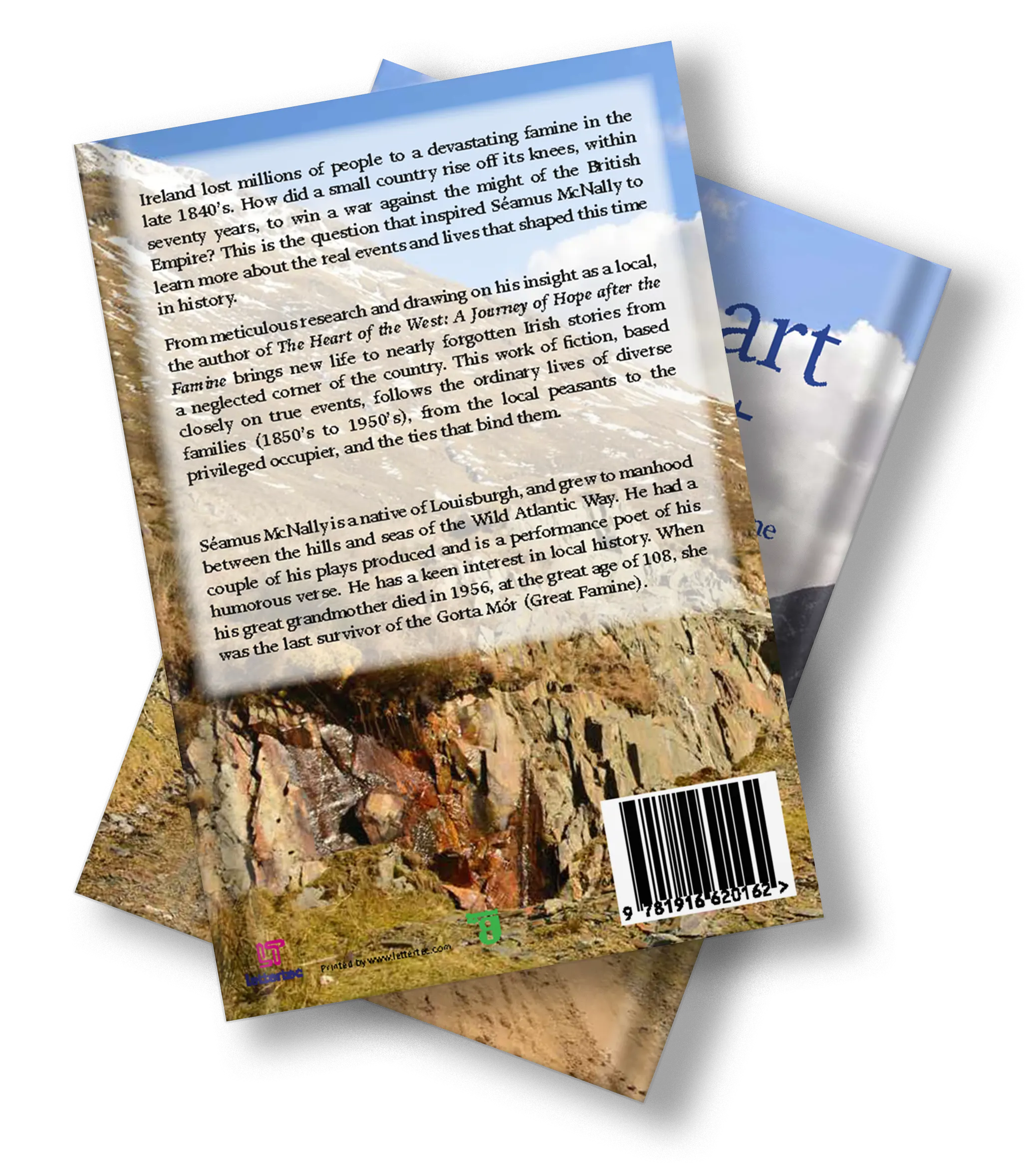About the novel

Summary of the background to ‘Heart Of The West
The small road that runs beside the author’s home place is still known as the Colony Road. It was here The Society for the Protection of Rights of Conscience built a church, at Bunlahinch, during the famine . The Secretary of the Society, a man named Hogan leased a further 193 acres from Lord Sligo and proceeded to build ten or twelve two bedroomed houses for the converts together with a school for its inhabitants. Desperate with hunger, some people availed of the ‘soup’ in return for converting to the Protestant faith. This proselytising was common during the famine and became known as ‘souperism’.
Charlotte Matilda Houstoun published her memoir, ‘Twenty Years in the Wild West’ (1870) about her time in Mayo, as wife of the land agent who had leased ‘the biggest sheep farm in Ireland’ from Lord Sligo. They built a large house overlooking Doolough, and her son remained there until the early 1900’s.
The circle of the story is completed by the historical place of Mary Ann McNally as the last survivor of the Gorta Mór. She was the great-grandmother of the author, and is buried in Killeen graveyard. After independence, Séamus McNally’s grandparents were among the first people to be resettled in the previously cleared foothills of Talamh Bán.
Today, the ruins of the Land Agent’s house lie hidden among trees overlooking Doolough, and the Clapper Bridge is the main artefact of The Colony still intact.
Close by is Bóirín na Deirce (See the poem) , the narrow road still known by this name today. It means ”The Road of Alms’ because it was built as famine relief.
Bóirín na Deirce
Bóirín na Deirce
We will stroll a while, you and I,
Down a, long forgotten, famine road,
Back the way; the path our people came.
Bóirín na Deirce, road of alms,
Each side bound in by solid stone.
A uniform of moss and lichen,
Will not hide a stone’s sad scéal.
Large or small, round and square,
Those solid stones, like skulls and bones,
Each a single sacred story.
“In a place neither now nor then,
Not so long ago; when stones could talk…”
‘Oh, seanachaí, let your story flow.’
